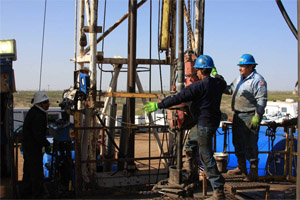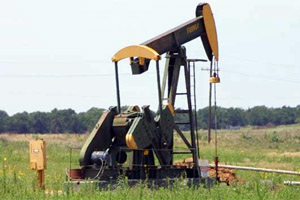 The Oklahoma Council of Public Affairs (OCPA), a free-market think tank, issued a statement today on possible changes to Oklahoma’s gross production tax rate on oil and natural gas drilling.
The Oklahoma Council of Public Affairs (OCPA), a free-market think tank, issued a statement today on possible changes to Oklahoma’s gross production tax rate on oil and natural gas drilling.
“OCPA supports free markets and low tax rates on work and productivity, so that individuals and employers are empowered with opportunity and Oklahoma has an economic advantage over other states. It is critical that lawmakers adopt as low a tax rate on all forms of drilling as possible this legislative session,” said OCPA President Michael Carnuccio.
“The demon in every boardroom is uncertainty, so the permanency in this proposal is a strong positive,” Carnuccio added. “If the Legislature takes no action this spring to lock in a two percent rate on drilling, many of the private businesses drilling in Oklahoma — particularly those that are publicly traded — will be forced to adjust their capital allocation plans for 2015 and beyond with the assumption that the gross production tax rate will be seven percent starting next year. At that point, Oklahoma will have lost its competitive edge over other states in the above-ground economics of drilling here versus elsewhere. Likewise, at a time when our nation’s leaders can’t agree on anything, Oklahoma’s governor and legislators came together with private industry to reach a compromise proposal — rather than the status quo of government holding enterprise hostage.”
 Jonathan Small, OCPA’s vice president for policy, said, “For two decades, Oklahoma has had an appropriately low effective tax rate of one percent on horizontal and other risky and capital-intensive wells. This reflects policy in the sales and income tax codes, recognizing that manufacturing and production should not be burdened with taxes until costs are recovered.
Jonathan Small, OCPA’s vice president for policy, said, “For two decades, Oklahoma has had an appropriately low effective tax rate of one percent on horizontal and other risky and capital-intensive wells. This reflects policy in the sales and income tax codes, recognizing that manufacturing and production should not be burdened with taxes until costs are recovered.
“The proposal to permanently set the rate at two percent for all new wells is economically sound, simple, and recognizes the need to limit the burden of taxation. Lawmakers should resist pressure from well-funded special interests and tax consumers to set a higher rate than two percent.”
“Unfortunately,” said Carnuccio, “lawmakers are unwilling to implement common-sense spending reforms. Therefore, the most significant policy decision of the last four years has already been made: lawmakers have chosen to raise tax rates on our state’s largest private-sector industry. Faced with two lackluster options, Oklahoma lawmakers should make the best of a bad situation. This is the best available option given the current environment at the Capitol.”
Oklahoma policymakers are considering two contrasting proposals. The first would raise the current gross production tax rate of one percent on horizontal and deep wells to two percent, while also lowering the rate of seven percent on conventional wells to two percent. As a result, all new wells would be taxed at the same, low rate. This structure would become permanent, removing all sunsets and providing tax certainty for energy drillers. It would also lock in the two percent tax rate for the first 36 months of a well’s production, or until initial investment is recouped, whichever comes first.
 The second, default statutory, proposal would let the current one percent tax rate on horizontal and deep wells expire on June 30, 2015, when the current gross production tax structure is scheduled to sunset, and from then on, tax all new wells at a rate of as much as seven percent. This would represent a major rate increase for the majority of new wells drilled in Oklahoma. The stated goal of advocates of the proposal is to increase tax collections and grow state government spending on a myriad of programs, though OCPA research has conclusively shown Oklahoma’s government spending and tax collections are already at all-time highs.
The second, default statutory, proposal would let the current one percent tax rate on horizontal and deep wells expire on June 30, 2015, when the current gross production tax structure is scheduled to sunset, and from then on, tax all new wells at a rate of as much as seven percent. This would represent a major rate increase for the majority of new wells drilled in Oklahoma. The stated goal of advocates of the proposal is to increase tax collections and grow state government spending on a myriad of programs, though OCPA research has conclusively shown Oklahoma’s government spending and tax collections are already at all-time highs.
For more information, read “Making the best of a bad situation” on OCPA’s website.
